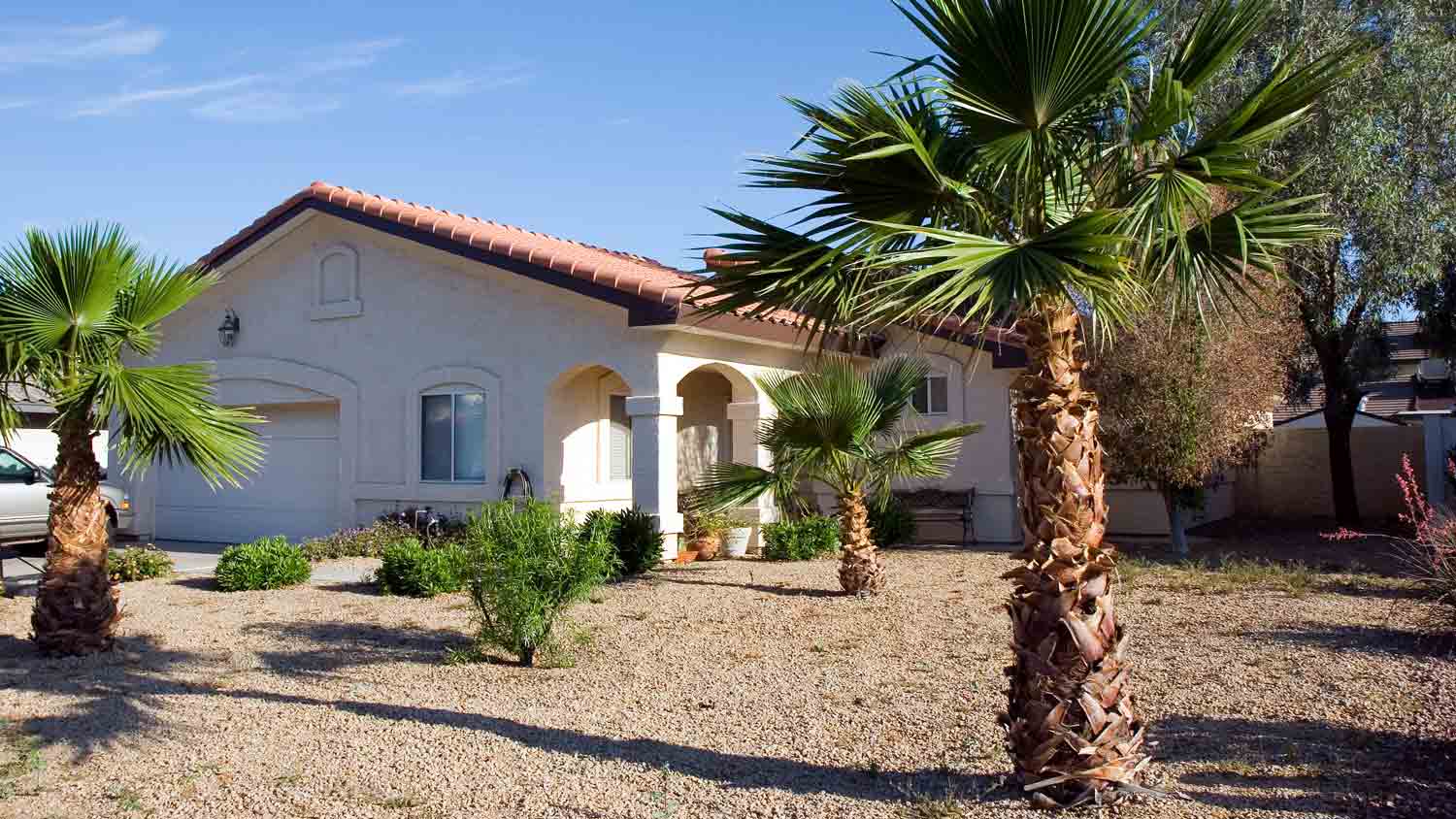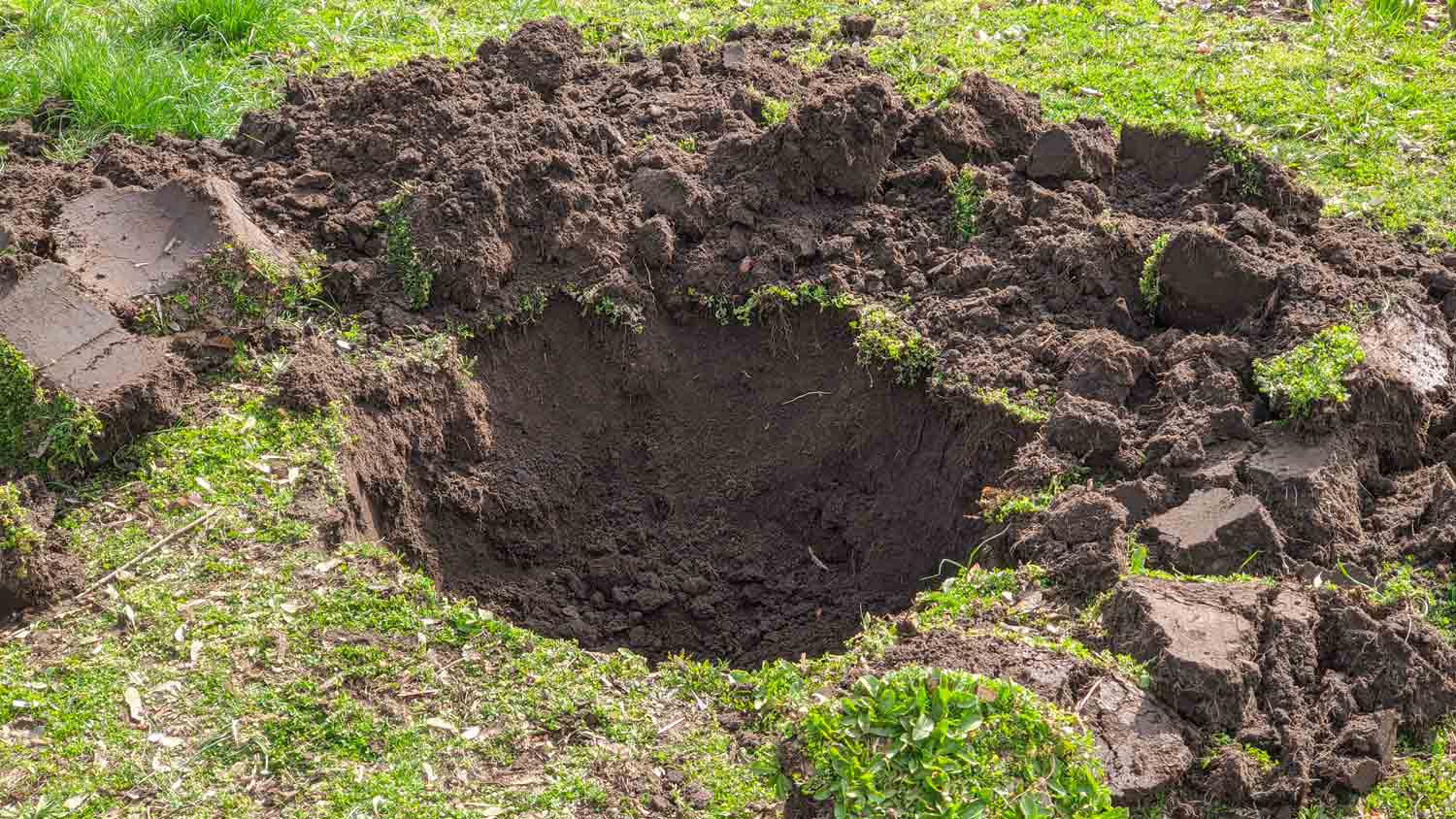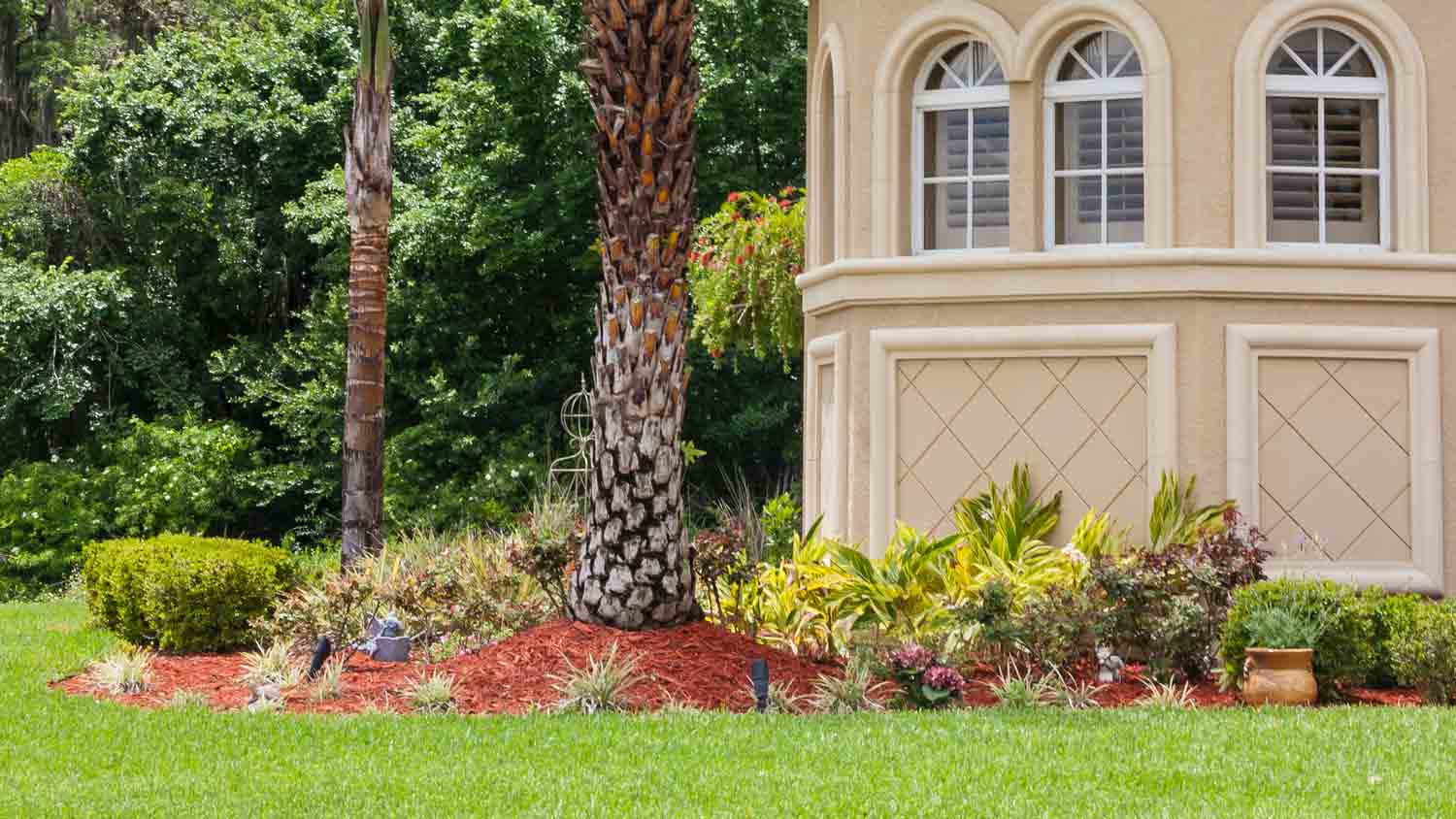
Discover what the current average tree removal cost is based on different factors to know how much it will cost to take care of a dead or troublesome tree on your property.
Power to your palm tree


Have the perfect palm tree in a not-so-perfect spot? Transplanting is an option, but you’ll need to know how to move a palm tree without killing it or risk a wasted effort.
The good news is that palm trees are typically easier to move than other tree types with big root systems. However, it’s still a delicate process, and palm trees will need all the help they can get to survive. Here’s everything you need to know about moving a palm tree successfully.
This task has serious personal and home safety risks. You should strongly consider hiring a tree removal professional to ensure it's completed safely and effectively.
Palm trees are usually happy right where they grow, so when do you need to move them? Property owners can face several situations where getting a palm tree to a new location becomes necessary, including the following:
Palm trees are growing too close to the house, creating a fire hazard and making it easy for pests to reach your roof, but you’d like to keep them in your yard.
You plan on building a shed, greenhouse, or new addition in an area with palm trees but you want to keep them.
You want to move hidden palm trees to the front of your yard for additional shade and curb appeal.
Palm trees aren’t getting enough water in their current spots, and you want to put it somewhere more conducive to growth.
You are transferring a potted palm to the ground or another pot.
You have a palm tree that you want to take with you when you move to a new home.
When taking on this project, expect questions only a pro can answer. With our network of local pros, you'll get the job done and your questions answered—without the hassle and stress of doing it yourself.

While you can’t always control when to transplant a palm tree, it’s best to wait until warm, mild months, preferably in the spring and early summer. This time frame gives the palm tree the best chance of survival.
Pick the new location for your palm tree to grow. It should be free of any other plant roots, get plenty of sun, and be easy to water frequently. You must check that there aren’t any irrigation or utility lines running through that part of your yard. You can call 811 to check for buried utility lines.
Finally, choose a location with soil that drains reasonably well. Palm trees require lots of water but it’s important that water doesn’t linger and drown the roots entirely. Avoid spots with too much clay in the soil or areas where water tends to pond after rainfall.
If you aren’t sure what type of palm tree you have or its age, try to find these details that impact the transplant process. For example, you should only transplant Sabal Palms (Sabal Palmetto) and similar species when they are adults, since juvenile trees rarely survive. Species like coconut palms can deal with cut roots easier than other species, but Senegal Date Palms are so large they need very large root balls cut out, and so on.
As a general rule, the taller and larger a palm tree, the harder (and riskier) it is to move. At a certain point, when a palm tree is well over 20 feet high and has been in place for years, trying to move it may not be worth the effort, especially if you’re staying on the same property. If your palm tree is near this size, we suggest consulting an arborist or palm tree specialist to get expert advice on your options.
They may look lightweight and breezy, but palm trees are heavy. We’re talking 100 pounds per foot of trunk or up to 2,000 pounds for a palm tree that’s 20 feet tall. So you’ll need a clear, organized plan for transportation.
Two options work for DIYers. The first is getting several people together to lift and move the tree. This option is best for short-distance moves only.
The other choice is renting a tractor with an attachment for grabbing trunks, like a specialized grabber or tree spade. You can expect a rental to cost around $400 per day, possibly more with certain attachments. If you’re transporting a palm tree over a significant distance, you will want a truck bed or platform that can hold it safely, too, along with binding cables to keep it in place. Keep in mind that this option require operating heavy machinery and moving a very heavy object, so it’s best to hire a tree service instead.

Speed is essential when transplanting a palm tree—you need to get it back in the ground and watered ASAP. We suggest digging out your new planting site first. Dig a hole around two feet deep and wide to start. If the soil seems thick or claylike, you can fill it with water and see how long it takes to drain (an experiment best done the day before). If the water is gone within an hour or two, fill it again. If the water again starts draining out in a few hours, the loose soil should be great for your palm.
If the water lingers for several hours, you may need to mix the soil with added soil mix and sand to improve drainage. Remember that you can make last-minute changes based on the size of the palm’s root ball.
Start digging out the palm tree by using shovels to dig a trench about one to two feet around the base of the palm tree, carving out the bulk of the root ball. Bigger trees have bigger root balls, so adjust your radius slowly until you know the bulk of the root ball.
It’s best to start with a larger radius and conserve as much of the root ball as possible. But this step also adds to the weight of the palm tree, and at some point you’ll have to make a cut-off decision. Focus on making sure the most of the root ball is conserved. You’ll have to chop through some roots at this point.
With most of the horizontal roots severed, push the palm tree down to reveal more of the root ball, either with the help of others or with a tractor, depending on the tree’s size. Quickly cut through any remaining tree roots at the bottom of the root ball so you can pull the palm tree out entirely.
For larger palms with many fronds, now is the time to trim away the older palm leaves. This step helps the palm tree focus its limited water resources on the newest leaves and increases the chances of survival. Leave the top layers of the greenest, newest leaves for the tree’s health, removing about ⅔ of the leaves at the most.
At this point, professionals typically wrap and tie the leaves together at the top like a rough headband, to protect the leaves during transport. It’s a good additional step for longer or more awkward transport jobs.
If you’re leaving the palm tree out of the ground for a couple of hours or longer, take time to wrap the root ball in burlap and soak it to keep the roots wet. Avoid letting the roots dry out if possible.

Now it’s time to use your knees or the tractor and lift the palm tree to carry it to the new destination. This step is the part that requires the most care, so move slowly and adjust as necessary.
Remember, palms aren’t technically trees—they’re more like big herbs, and lack the durability of true trees. You don’t want to damage the tree bark, which can cause permanent injury to the tree, and you don’t want to bend the trunk too much, which could snap it outright. Go slowly, and if you use any cables or chains, wrap them well in burlap or nylon wrap to keep them from digging into the trunk.
Planting the palm tree again shouldn’t be difficult as long as you get to this stage quickly. Unwrap the root ball and place it in the prepared hole, then gently ease the palm tree back into a vertical state. The tree should be at the same height from the ground as its previous spot, so adjust the hole’s depth as necessary. You can make vertical adjustments carefully as you start to backfill.
Dampen the hole with a spray of water. Use your backfill (or the backfill and sand mixture for looser soil) to fill the hole completely. Go slowly: You don’t want to tamp down the soil too hard, which kills the roots and the tree’s chance of survival, but you also don’t want any air pockets where roots can’t grow. Get ready to get your hands dirty as you secure the tree.

Use a hose to lightly water the soil around the base of the palm tree around the root ball for 30 minutes to an hour, changing sides occasionally. When finished, cover the soil around the base with a layer of mulch for protection.
Don’t let your tree watering schedule end there, though. Palm trees need lots of moisture during this fragile time. For the next three weeks, set up a dedicated drip watering session for about 20 minutes every day. If the weather is particularly hot, increase to twice a day. Ensure the soil continues draining well so that the roots aren’t drowned before they can grow.
After the first few days of a transplant, you can still do plenty to help your palm tree start thriving again. Take a look at these steps for more long-term care:
After watering daily for the first three weeks, scale back watering to every other day for another two weeks using the drip method. If the tree is looking healthy, you can switch to normal irrigation after that.
Even the newer leaves on a transplanted palm tree can struggle. Don’t be surprised if you see the leaves turning yellow or brown over the coming weeks. That’s a sign of the shock the tree has been through. Wait for at least four months to see if the palm starts producing new leaves, a sign it has established itself.
Palm trees don’t have large root systems, even less so after their root ball has been cut. That makes them very susceptible to toppling during high winds. If windy weather is a possibility in your area, plant and tie wooden beams against the tree, or use stakes and tree straps to keep the tree steady. Never nail boards directly into a palm tree, which can’t easily recover from the damage and could develop diseases as a result.
Moving a palm tree takes plenty of effort, using special machinery, and many steps, so consider hiring a local palm tree service to move the tree for you. However, hiring a professional tree moving service will cost more than the DIY option, with transplanting costs between $300 to $500, with extra charges for a large palm tree. Plus, you’ll still have to manage the strict watering schedule, the supports against the wind, and other maintenance tasks.
However, hiring a palm tree moving pro means you won’t have to spend money on a tractor rental or manage its difficulties, so it’s a strong choice for larger, more mature palm trees. A pro may also be able to give you advice on soil drainage, location, and more.
From average costs to expert advice, get all the answers you need to get your job done.

Discover what the current average tree removal cost is based on different factors to know how much it will cost to take care of a dead or troublesome tree on your property.

Trimming your bushes is one of the less costly aspects of landscaping, and it’s helpful to bundle many trimming services together to save money.

Find out how much it costs to plant a tree based on the number of trees, their size, where you want to plant them, and DIY versus professional costs.

Pruning a tree doesn’t require a ton of tools or time, and a little work goes a long way in keeping your leafy friends happy and healthy.

Discover the answer to what is eating my tree trunk, why it's doing it, and what you can do to eliminate and prevent the insect problem.

A credible tree care company should be licensed, carry insurance, have a certified arborist on staff, and be trained in safe tree removal. Here's what to know.